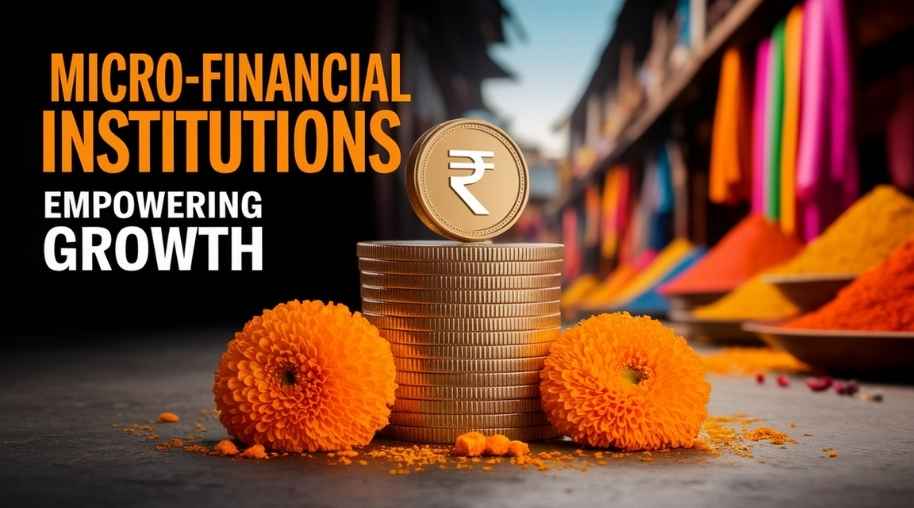MFIs Full Form-Micro-Financial Institutions
by Shashi Gaherwar
0 1869
Micro-Financial Institutions (MFI): Role, Benefits, and Impact on Economic Growth
Introduction
Micro-Financial Institutions (MFIs) play a crucial role in providing financial services to low-income individuals and small businesses that are excluded from traditional banking systems. These institutions offer microloans, savings accounts, insurance, and financial training, thereby promoting financial inclusion, entrepreneurship, and economic growth in underserved communities.
This article explores the concept of micro-financial institutions, their role, benefits, challenges, and their impact on the global economy.

What are Micro-Financial Institutions?
Micro-Financial Institutions (MFIs) are financial service providers that offer small loans, savings, and other banking services to individuals and businesses who lack access to conventional banks. They primarily focus on empowering low-income communities by offering financial assistance to help them start or expand businesses, improve livelihoods, and achieve economic stability.
Objectives of Micro-Financial Institutions
MFIs are established with several key objectives:
- Financial Inclusion: Provide banking services to the unbanked and underprivileged sections of society.
- Poverty Alleviation: Enable low-income individuals to become financially independent through micro-businesses.
- Supporting Small Entrepreneurs and Women Empowerment: Many MFIs focus on lending to women entrepreneurs, helping them establish small businesses and achieve economic stability.
- Encouraging Savings and Financial Literacy: Promote financial discipline by offering savings accounts and financial education programs.
- Reducing Dependence on Informal Lenders: Provide an alternative to high-interest moneylenders and loan sharks, offering fair and regulated financial support.
Services Provided by Micro-Financial Institutions
- Microloans (Microcredit):
- Small, unsecured loans provided to individuals to start or expand businesses.
- Loan amounts vary based on business needs and repayment capacity.
- Savings Accounts:
- Encourages clients to develop a habit of saving for emergencies, education, and investments.
- Insurance Services:
- Some MFIs offer microinsurance to protect low-income individuals from unforeseen risks like illness, accidents, or crop failures.
- Financial Literacy and Business Training:
- MFIs provide training on financial management, budgeting, and entrepreneurship, equipping borrowers with essential skills for success.
Types of Micro-Financial Institutions
There are several types of MFIs, including:
- Non-Governmental Organizations (NGOs): Non-profit organizations that focus on social development and financial inclusion.
- Microfinance Banks: Formal financial institutions regulated by central banks, offering microloans and other services.
- Cooperative Societies and Credit Unions: Community-driven financial institutions that provide loans and savings facilities to their members.
- Self-Help Groups (SHGs): Small groups of individuals who pool their resources to lend money among themselves.
Benefits of Micro-Financial Institutions
- Promotes Economic Growth: By funding small businesses, MFIs contribute to job creation and economic development.
- Empowers Women: Many microfinance programs focus on women, providing them with opportunities to become financially independent.
- Encourages Financial Discipline: Regular loan repayments and savings programs help individuals build better financial habits.
- Reduces Reliance on Loan Sharks: MFIs offer affordable loan options, reducing the need for borrowing from high-interest informal lenders.
- Supports Rural Development: Micro-financial institutions often target rural areas, helping farmers and small entrepreneurs grow their businesses.
Challenges Faced by Micro-Financial Institutions
- High Operational Costs: Servicing small loans across remote locations is expensive and requires significant infrastructure.
- Risk of Loan Defaults: Many borrowers lack stable income sources, increasing the risk of non-repayment.
- Over-Indebtedness of Borrowers: Some individuals take loans from multiple MFIs, leading to debt traps.
- Lack of Regulatory Framework in Some Countries: Inadequate government regulations can lead to exploitative lending practices.
- Limited Access to Capital: Many MFIs struggle to secure sufficient funds to expand their lending operations.
Success Stories of Micro-Financial Institutions
Several countries and organizations have demonstrated the success of microfinance in lifting people out of poverty:
- Grameen Bank (Bangladesh):
- Founded by Muhammad Yunus, Grameen Bank pioneered microfinance by offering small loans to rural entrepreneurs, especially women.
- The success of this model led to global adoption of microfinance.
- SKS Microfinance (India):
- One of India’s leading microfinance institutions, SKS Microfinance has provided loans to thousands of small business owners and farmers.
- BancoSol (Bolivia):
- A leading microfinance institution in Latin America, BancoSol has supported thousands of micro-entrepreneurs, improving livelihoods.
The Future of Micro-Financial Institutions
The future of MFIs looks promising with advancements in technology, digital banking, and mobile payments:
- Digital Microfinance: Many MFIs are adopting mobile banking and fintech solutions to expand their reach.
- Blockchain and Peer-to-Peer Lending: Blockchain technology is being explored to provide secure and transparent lending solutions.
- Government Support and Policy Improvements: Governments are introducing regulatory frameworks to promote ethical lending and prevent borrower exploitation.
- Integration with Mainstream Banks: Collaboration between MFIs and commercial banks can enhance financial services for underserved populations.
Micro-Financial Institutions (MFIs) play a crucial role in empowering low-income individuals, promoting entrepreneurship, and reducing poverty. Despite challenges like loan defaults and high operational costs, MFIs continue to expand their impact globally.
With advancements in digital banking, government support, and innovative financial models, MFIs are expected to reach more underserved communities, fostering financial inclusion and economic growth.
Further Learning Resources
If you’re passionate about building a successful blogging website, check out this helpful guide at Coding Tag – How to Start a Successful Blog. It offers practical steps and expert tips to kickstart your blogging journey!
For dedicated UPSC exam preparation, we highly recommend visiting www.iasmania.com. It offers well-structured resources, current affairs, and subject-wise notes tailored specifically for aspirants. Start your journey today!

Share:








Comments
Waiting for your comments